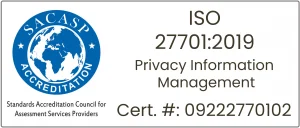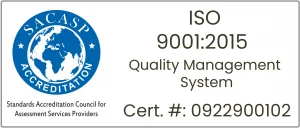© 2025 Macro Global. All Rights Reserved.
Open banking has influenced the financial sector by helping banks and third-party providers to securely share data. This unique technique gives customers more control over their financial information. It also promotes competition, resulting in the development of intriguing new financial tools and services.
Open Banking Limited’s (OBL) release of Open Banking Standard v4.0 marks a significant development in this field. This significant improvement aims to bring in a new era of efficiency, security, and collaboration in the Open Banking ecosystem. Let us further explore the implications of this for the future of Open Banking.
The Evolution of Open Banking Standards
Open Banking v1.0
The adoption of the first standardised Open banking versions, v1.0 and v1.1, created by Open Banking Limited (OBL), was an important milestone in 2018. These versions provided a common language for data sharing, allowing Account Information Services Providers (AISPs) to access a customer’s current account information with explicit permission. The opportunity for third-party providers to access financial data inspired a wave of innovation, resulting in the development of a dynamic Open Banking ecosystem packed with financial apps and services.
Open Banking v2.0
The primary update, Open Banking Standard v2.0 (2018), introduced the idea of “Products and Services,” enabling TPPs to access account information and initiate payments. This considerably increased the potential for novel financial services.
Open Banking v3.0
Open Banking Standard v3.0, launched in certain locations, addressed security concerns by adopting best practices and aligning with FAPI 1.0 and served as a major stride between older versions and v4.0. This enhanced developer adoption by clearly differentiating security profiles and functional parts. This version updated customer journey guidelines and sent TPPs event notifications regarding account activity changes.
Shifting Landscape, Mounting Challenges
Older versions of Open Banking standards have limitations, notwithstanding their importance in developing the ecosystem.
- Heightened Security Concerns: With more data exchange, the risk of data breaches and unauthorised access increases. Robust security measures are critical to retaining user confidence, which is a key component of Open Banking.
- Regulatory Evolution: Regulatory organisations are continually releasing new rules to ensure appropriate data practices and consumer protection. Open Banking principles must remain compliant with these changing requirements.
- Demand for Enhanced Functionality: To ensure a flawless Open Banking experience, users and TPPs want a greater set of functions. This features faster data access, better error handling, and more robust payment capabilities. Improved functionality, such as faster data access and better error notifications, are critical for increasing user confidence and adoption.
The absence of standardised messaging formats, inadequate data sharing formats, and functionality slowed the development of more sophisticated financial apps. - Inconsistent Information Flows: The inconsistency in the communication of payment statuses and error messages caused friction for both TPPs and end users.
These challenges prompted the creation of a more comprehensive and secure standard, paving the way for Open Banking Standard v4.0.
Key Changes in Open Banking v4.0
Open Banking v.4.0 introduces major changes to solve these difficulties, including:
- Mandatory Security Upgrade: Requires a switch to FAPI 1.0 Advanced Final, a more secure authentication mechanism than prior versions. This ensures more robust authentication and authorisation methods, which protect user data and reduce security threats.
- Alignment with ISO 20022: This widely recognised messaging standard facilitates easy data transmission between Open Banking ecosystems across borders and promotes compliance with regulations such as PSD2.
- CHAPS Requirements Integration: The standard conforms to the Bank of England’s future CHAPS standards for high-value money transfers.
- Enhanced Information Flows: The new standard improves how payment statuses and error notifications are transmitted, resulting in a better user experience for both TPPs and customers.
- Optional Updates: The new standard offers optional updates that TPPs can use for functions such as account verification and data aggregation. This paves the path for the creation of increasingly advanced financial apps.
- Customer Experience Guidelines: These guidelines were updated to give FAPI and TRI recommendations and enable information flow modifications, including common scenarios and related problems.
- Centralised Codeset Repository: Streamlines TPP development by centralising all codesets used in Open Banking requirements.
- Updates to Specifications: Addresses known difficulties with read/write requirements and provides advice on breaking changes and migration techniques.
- Operational Guidelines: They were updated to include further guidance on breaking changes and on long-term consent migration plans.
Open Banking Roadmap: The Bigger Picture and How v4.0 Aligns
The Open Banking Roadmap is a strategic roadmap that outlines the long-term goals for Open Banking’s development. It acts as a guiding light for stakeholders such as banks, TPPs, and regulators, encouraging collaboration and maintaining a future-proof environment.
Goals of the Open Banking Roadmap
Levelling Up Availability and Performance
Enhance availability and performance of APIs by designing a data collection framework, analysing data, and consulting on necessary changes for API availability and performance.
Mitigating Financial Crime Risks
Assess payment limits conformance, design a data collection framework for financial crime, implement open banking-based data sharing in Faster Payments to curb fraud, and deploy effective financial crime prevention tools for TPPs and ASPSPs.
Effective Consumer Protection
Perform a gap analysis of dispute processes, propose additional dispute process or protection requirements if needed, and focus on improving consumer protection amidst potential issues.
Improving Information Flows to TPPs and End Users
Analyse payment statuses, error codes, and information flows to ensure consistent and effective messaging to TPPs and end users.
Promoting Innovative Services using VRP
Establish terms of reference for a working group to expand VRP services, publish a discussion paper on commercial frameworks for premium APIs, and conduct consumer research to identify use cases and risks for vulnerable consumers.
Finalising the Design of the Future Entity
Implement alternative governance arrangements for non-Order activities, develop a market pricing framework, finalise the structure, governance, and funding design of the future entity, and begin the transition from OBIE to the future entity with regulatory consent.
These themes are crucial for the successful advancement of Open Banking v4.0. This future roadmap encompasses critical initiatives aimed at improving performance, security, fraud prevention, consumer protection, and the overall functionality of open banking services.
This multi-phased approach involves collaborative efforts between regulators, industry participants, and stakeholders to ensure the sustained growth and development of Open Banking in the UK.
Priorities for Open Banking v4.0
Building a Sustainable Ecosystem
The major goal of open banking v4.0 is to establish a long-term and competitive environment for the open banking ecosystem’s advancement. This includes ensuring that the ecosystem can grow beyond its current capabilities to give further benefits to end users. The ecosystem hopes to strengthen its base and support new products and services by encouraging new innovations and economic arrangements.
Unlocking the Potential for Open Banking Payments
Developing open banking payment features to provide businesses and customers with more payment options. The intent is to provide people with more options and better service when making payments. This involves analysing open banking payments in retail transactions as a viable option to card payments to promote payment innovation and competition.
Adopting a Scalable Data Sharing Model
Adopting a scalable paradigm for future data sharing propositions within the open banking ecosystem is another priority. This includes securely gathering and exchanging data to support the development of personalised products and services for end users. Enhancing data sharing procedures is critical for generating creative solutions that effectively address the different needs of consumers and enterprises.
The Role of Regulators and Acts in Open Banking
Open banking is supported by several regulatory and supervision bodies. The main players are as follows:
The Competition & Markets Authority
- Secures a competitive Open Banking market within the UK by preventing anti-competitive practices and fostering innovation.
- Keeps an eye on adherence to Open Banking rules and looks into any violations.
Financial Conduct Authority
- Maintains consumer protections within Open Banking while regulating financial services.
- Frames guidelines for data protection, customer consent, and ethical data practices.
Revised Payment Services Directive
- A European Union directive that serves as a regulatory basis for open banking across Europe.
- Requires banks to securely share customer account data with authorised TPPs with consent from users.
- Implements strong customer authentication procedures for Open Banking transactions.
General Data Protection Regulations
- A legislation that oversees data privacy and protection in the European Union.
- Applicable to Open Banking because it involves the processing of client financial information.
- TPPs must comply with strong data protection standards and get user consent for data collection and use.
Open Banking Implementation Entity (OBIE)
- Standardise APIs and security procedures to ensure secure and consistent data sharing among stakeholders in the ecosystem.
- Ensure compliance with legal and regulatory frameworks, promoting trust and confidence in the open banking ecosystem.
- Encourages collaboration and communication among stakeholders, such as banks, third-party providers, regulators, consumer groups, and industry participants, to promote a shared understanding of open banking objectives and best practices.
- Promotes transparency and allows consumers to grant and revoke consent for the sharing of their financial information with approved third-party providers, empowering them to manage their data effectively.
- Provides technical assistance and guidance to banks, third-party vendors, and other stakeholders regarding best practices, technical documentation, and implementation.
In charge of reviewing and improving technological specifications, security procedures, and industry guidelines regularly to keep up with the changing financial ecosystem.
Aligning Innovation with Regulations
- The Open Banking Roadmap integrates impending developments, like PSD2 and GDPR, to keep the ecosystem secure and user-friendly.
- The strategy prioritises consumer protection by improving user control and data security, in line with the FCA’s emphasis on responsible data practices.
- It also identifies opportunities for innovation while accepting legal constraints, allowing TPPs to build new apps while remaining compliant with the CMA’s Open Banking laws.
- Collaboration with regulators such as the OBIE (UK) and relevant authorities is critical to the development of the roadmap.
- This approach creates a future-proof ecosystem that fosters innovation within a secure and compliant framework, ensuring that Open Banking continues to benefit users, businesses, and the larger financial landscape.
Open Banking v4.0's Impact on Users, Businesses, and the Ecosystem
- Users can have more authority over their financial data, allowing third-party providers to safely access their account details.
- Both businesses and consumers can benefit from increased access to innovative financial products and services.
- Open banking v4.0 encourages competition and innovation in the financial sector, leading to better service and cheaper prices.
- Across the ecosystem, collaboration and partnership opportunities have led to mutually beneficial linkages and new revenue sources.
- Open banking v4.0 delivers businesses insights into client behaviour, financial patterns, and risk assessment.
- The ecosystem contributes to greater financial inclusion by providing access to a wider range of financial services and products.
Macro Global’s Tavas: Powering the Future of Open Banking
MG’s Tavas Open Banking Product Suite and Solutions adhere to the Open Banking Standards through several key features and functionalities:
- Fully complies with Open Banking conformance test suite standards and is compliant with the UK Open Banking Specification (Version 3.1 onwards).
- Offers certified Financial-grade APIs (FAPI), ensuring the security and integrity of the open banking transactions.
- Provides a robust data flow following Open Banking security conformance and accelerating features for the secure deployment of open APIs in compliance with OBIE API Specifications.
- Enables strong customer authentication (SCA) for access to customer financial accounts, meeting the requirements of the revised Open Banking (PSD2) regulations.
- Includes Identity & Access Management (IAM) with OAuth 2.0 and OpenID Connect standard protocol, ensuring secure authentication and authorisation of Open APIs access.
- Offers a developer portal and an integrated sandbox environment for seamless TPP onboarding and testing, as per the OBIE guidelines.
- Along with incident management, reporting, and log management functionalities, Tavas ensures regulatory compliance and provides a reliable and secure platform for open banking transactions.
Thus, MG’s Tavas Open Banking Product Suite and Solutions align with the standards set forth in the Open Banking standards by offering a comprehensive set of features that prioritise security, compliance, scalability, and user experience in the evolving open banking ecosystem.
Have questions about how Tavas can benefit your business? Reach out to our sales team for a consultation.
Try Macro Global’s
Tavas - Open Banking Product Suite and Solutions
Unlock the future of finance. Get started with Open Banking today.
Related Posts
19 November 2025 FSCS Single Customer ViewRegulatory Technology
PRA PS24/25 & SS18/15: Detailed Compliance Bulletin for FSCS Limit Update
Key compliance actions under PRA PS24/25 and SS18/15 for FSCS limit updates, SCV changes and disclosure obligations.
18 November 2025 FSCS Single Customer ViewRegulatory Technology
Regulatory Update: FSCS Deposit Protection Limit Rising to £120,000 – Key FSCS SCV Reporting Changes for Banks and Deposit Taking firms
FSCS changes for 2025 raise the protection limit to £120k. See what banks and other Fis must do for SCV reporting, THB updates, and regulatory compliance under the new rules.
18 November 2025 FSCS Single Customer ViewRegulatory Technology
SCV and Cloud Adoption for PRA & FSCS Compliance: A Guide to Operational Resilience
Learn how cloud-enabled SCV strengthens PRA and FSCS compliance, improves operational resilience, and enhances depositor protection for financial institutions.











